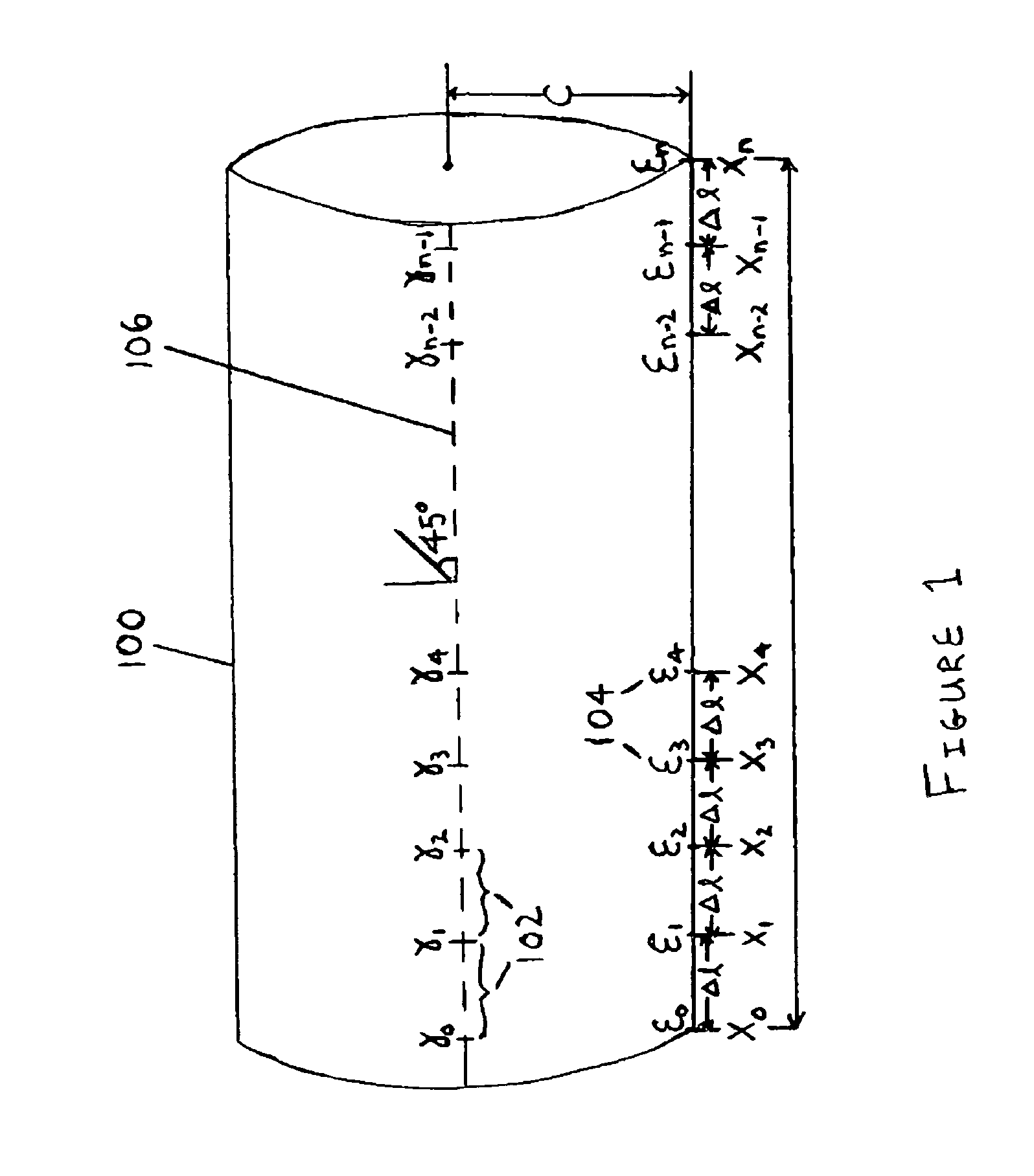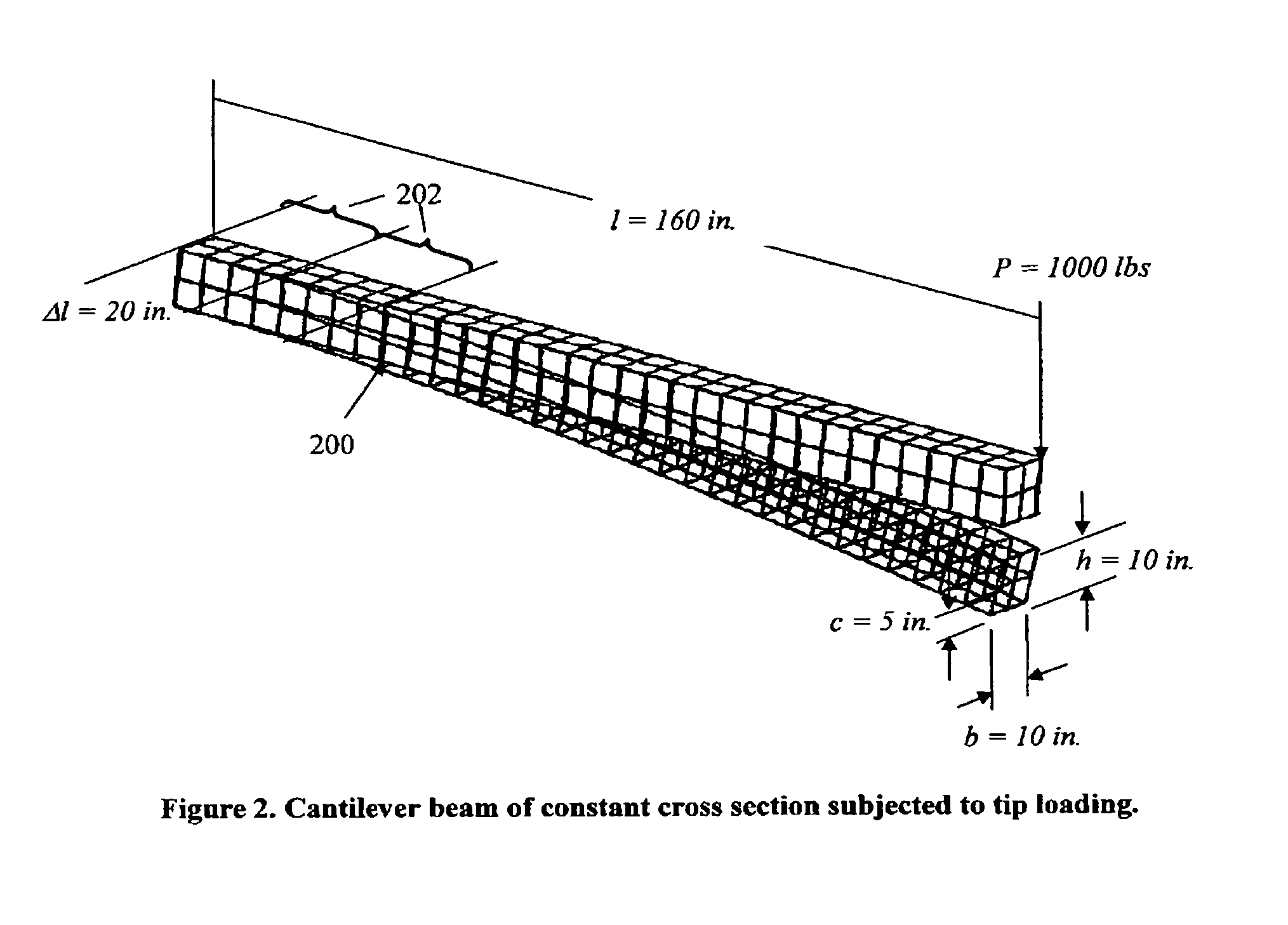Process for using surface strain measurements to obtain operational loads for complex structures
a technology of complex structures and surface strain, which is applied in the direction of instruments, structural/machine measurement, force/torque/work measurement, etc., can solve the problems of reducing the number of degrees of freedom, reducing the complexity of the fem, and requiring a large amount of effort to accurately model the structural response of these realistic structures
- Summary
- Abstract
- Description
- Claims
- Application Information
AI Technical Summary
Benefits of technology
Problems solved by technology
Method used
Image
Examples
Embodiment Construction
[0022]The present invention is an improved method of using strain data in order to obtain operational loads on complex structures. In general, a plurality of fiber optic sensors are placed on a complex structure, preferably in a grid type, regular pattern. By using fiber optic sensors, a large number of sensors may be employed, due to the small size and weight of the sensors. The sensors, in essence, divide the complex structure into a plurality of sections. The present invention assumes that each of these “sections”, which are defined herein as the area from one adjacent fiber optic sensor to another, has a consistent structural behavior within each section, but the structural behavior may be different in different sections. Because the strain is measured at both edges of each section, the section lengths can either be selected to be the same or may vary.
[0023]After the fiber optic sensors are installed upon the complex structure, bending and torsional loads can be determined as fo...
PUM
| Property | Measurement | Unit |
|---|---|---|
| force | aaaaa | aaaaa |
| structural properties | aaaaa | aaaaa |
| elastic modulus | aaaaa | aaaaa |
Abstract
Description
Claims
Application Information
 Login to View More
Login to View More - R&D
- Intellectual Property
- Life Sciences
- Materials
- Tech Scout
- Unparalleled Data Quality
- Higher Quality Content
- 60% Fewer Hallucinations
Browse by: Latest US Patents, China's latest patents, Technical Efficacy Thesaurus, Application Domain, Technology Topic, Popular Technical Reports.
© 2025 PatSnap. All rights reserved.Legal|Privacy policy|Modern Slavery Act Transparency Statement|Sitemap|About US| Contact US: help@patsnap.com



